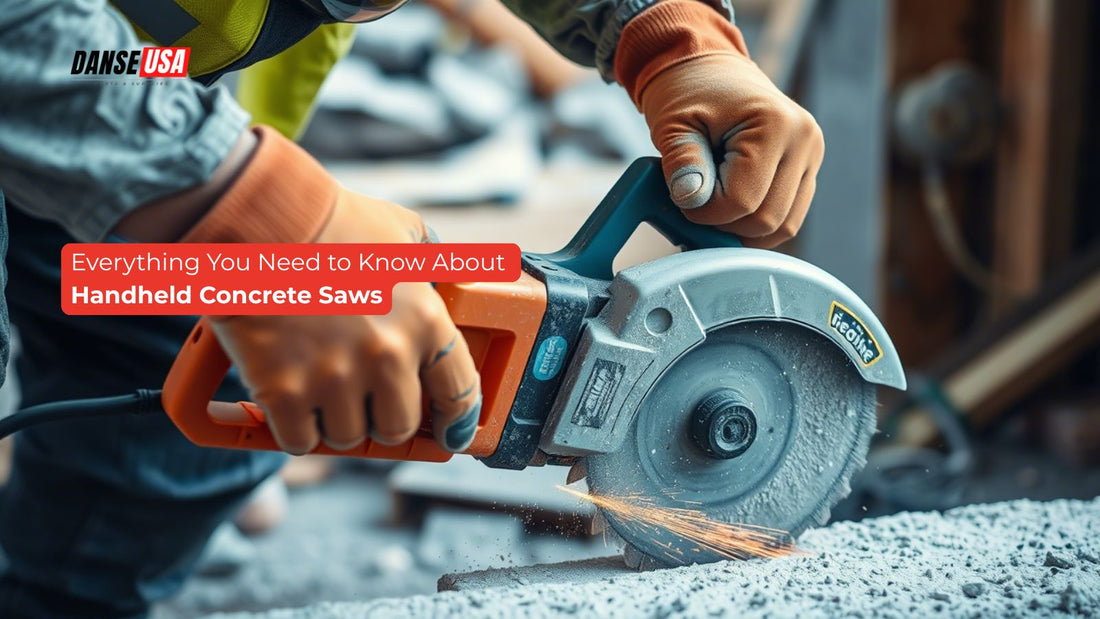
Everything You Need to Know About Handheld Concrete Saws
Share
When it comes to cutting through tough materials like concrete, brick, or asphalt, few tools match the power and precision of a handheld concrete saw.
Whether you're a seasoned contractor or a DIY enthusiast tackling a major home project, understanding how these tools work and how to use them safely is key to getting the job done right.
What Is a Handheld Concrete Saw?
A handheld concrete saw, also known as a cut-off saw or quick cut saw, is a power tool designed to slice through hard materials such as concrete, masonry, stone, and metal.
Unlike larger floor saws that are pushed across surfaces, handheld models offer portability and control, making them ideal for vertical cuts, tight spaces, or smaller-scale jobs.
Types of Handheld Concrete Saws
-
Gas-Powered Saws
These are the most powerful and commonly used type. They're great for outdoor use where ventilation isn’t a concern. They offer high cutting performance but are heavy, noisy, and require regular maintenance. -
Electric Saws
Lighter and quieter than gas models, electric concrete saws are well-suited for indoor work. However, they require access to power and may not be as powerful for heavy-duty cutting. -
Battery-Powered Saws
Cordless models are gaining popularity for their convenience and mobility. They’re best for lighter tasks or areas where cords and fuel are a hassle.
Common Applications
-
Cutting concrete slabs or blocks
-
Trimming asphalt
-
Creating expansion joints
-
Demolition work
-
Cutting rebar or metal piping (with the correct blade)
Choosing the Right Blade
Blades are just as important as the saw itself. The most common blade used is the diamond blade, known for its durability and ability to cut hard materials cleanly. There are also abrasive blades for specific tasks like cutting metal. Always choose a blade designed for the material you’re cutting, and make sure it's compatible with your saw’s RPM rating.
Safety Tips
Operating a handheld concrete saw requires caution. Follow these essential safety tips:
-
Wear protective gear: Safety glasses, hearing protection, gloves, and a dust mask are essential.
-
Secure your material: Always stabilize the workpiece before cutting.
-
Wet cutting vs. dry cutting: Wet cutting (with water) reduces dust and cools the blade, but make sure your saw is rated for it.
-
Cut in stages: Don’t force the blade. Let it do the work and make shallow passes to maintain control and blade life.
-
Mind your surroundings: Ensure proper ventilation and keep flammable materials away from your work zone.
Maintenance Matters
Like any power tool, your saw will perform best with regular maintenance:
-
Check air filters, spark plugs, and fuel lines (for gas models)
-
Keep the blade clean and replace it when worn
-
Inspect belts, guards, and handles for wear or damage
-
Store the saw in a dry place when not in use
Final Thoughts
A handheld concrete saw is a versatile, powerful tool for any construction or renovation project involving masonry materials.
With the right blade and careful handling, it can help you achieve clean, professional results—whether you're cutting a patio slab, removing a wall section, or carving out expansion joints.
Just remember: safety first, blade second, and always cut with confidence.




